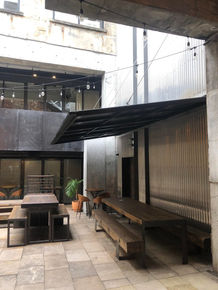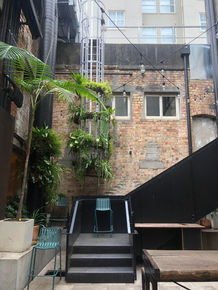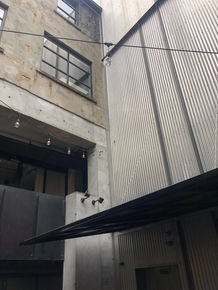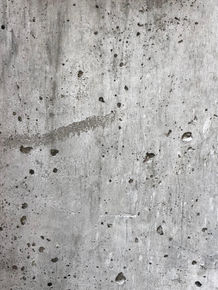Vuletic
Week Nine: Detailing
Weekly Learning Outcome
-
Develop and refine the design presentation.
-
Synthesise the reflections and combine key points of the design process and thinking.
-
Present the final design concept in both an oral presentation and digital format.
-
Consider the guest critics feedback for any final modification.
Jasmax - Biophillic Design
A walk through the Waitakere Ranges



To enhance the space and provide its inhabitants with an immediate connection to nature, the concept of a terrarium was formed, providing an experience akin to walking through the Waitākere Ranges. Located at the heart of the workplace, the terrarium provides staff with a space for contemplation and meeting for informal conversation, and to experience the calming and restorative effects of being immersed in nature throughout the working day.
Drawing on holistic biophilic design principles, the terrarium includes 1,600 plants across a variety of species, including ferns and palms. The sensory experience is also enhanced by a change in environmental conditions; specifically, the ratio of oxygen in the air is artificially increased, the air is cooler, the lighting is subdued to replicate being beneath a tree canopy and sounds of the forest and New Zealand birdsong are played to provide a replication of the natural world. Meeting pods are located throughout the Terrarium, which, like the secluded seating areas, provide flashes of vivid colour contrasting with the greenery. Te Tiriti o Waitangi is at the heart of the new office.
Gemma suggested that I take a look at one of her colleagues projects and she sees a lot of similarities with the aesthetics and my project itself! Seeing how Jasmax has applied the lighting in reference to the biophilia has really helped me see the type of atmospheric qualities I want to convey. The warm tones and shadows that have been created really stood out to me because It helps me visualise to realism of my project.
Being from West Auckland myself and seeing how the inspiration of this project was taken from the Waitakere Ranges inspires me to develop my atmospheric qualities so that the interior of my space feels immersive to the audience. Allowing them to really feel as though they are in an interior forest .. I really want the cinematic qualities of light to allow the audience to move through the space and feel the tranquility and transcendental experience. Allowing a private space for my audience to be able to meditate or do yoga makes me think that the connection between the ground floor and second floor is cohesive. It allows my users to experience both private and public scenarios.
Revisiting the Site: Courtyard
How can I create a cinematic experience with light?
Forming a space that also create a tranquil forest experience with biophilia - A Yoga Meditation space.
Utilising the natural light that the site provides!!
Sketches:
Ceiling Cover

Light/ Shadow of vines
Birds being attracted to the ceiling cover (SOUNDS)
Hanging vines
Privacy
Immersive
Atmospheric
Vines such as climbers and creepers for instance Star Jasmine or Bengal clock vine
Bengal Block Vine

Thunbergia grandiflora is an evergreen vine in the family Acanthaceae. Common names include Bengal clockvine, Bengal trumpet, blue skyflower, blue thunbergia, blue trumpetvine, clockvine, skyflower and skyvine.
Plants may grow to about 20 metres in height and have a long root system with a deep tap root. The stalked, opposite leaves, which have a rough surface, are quite variable in shape. They may be triangular or ovate and the margins may be toothed, lobed or entire. Length is up to 200 mm and width is up to 60 mm, which are typically smaller than the very similar T. laurifolia.
The blue to mauve flowers are about 8 cm across with a 4 cm long tube that is pale yellow inside. These are followed by pods containing seeds that are ejected several metres upon ripening. Plants also reproduce from segments that are washed down watercourses.
Applying this to my Design





Testing how light Affects the space with the ceiling, seeing the light casts that are produces.


Programming the space

Interior Biophillia: What plants fill my space?
Spider Plant

Spider plants have long and skinny foliage that arch out from its roots. Its leave resemble the legs of a spider. Spider plants are also sometimes referred to as spider ivy and ribbon plant. These plants can produce small white flowers when cared for correctly sprout spiderettes, or baby spider plants that can be repotted to grow more spider plants.
Spider plants can thrive without much natural light. These plants can thrive in areas with a mix of fluorescent and natural light. Spider plants can sometimes have browning leaves. This is a result of exposure to fluoride in water. Watering with distilled or rain water can help deter browning and keep your plant nice and green.
Snake Plant

Snake plants are also known as mother in law’s tongue. It’s suggested that this nickname comes from the leave’s sharp point. Its striped color earned its name as a “snake” plant because it slightly resembles a snake’s skin. They are visibly tall plants and hardy enough to withstand the most forgetful plant parent. Snake plants can hold up their sturdy look even with a few weeks of neglect.
Snake plants can tolerate a wide range of light conditions, but prefer indirect light. They easily rot, so it’s important to let their soil dry between waterings.

Philodendrons are most known for their lively foliage and distinct look. The heartleaf philodendron specifically is a hardy plant that can withstand most conditions with minimal care, including low light. Philodendrons come in climbing and non-climbing varieties and can grow as tall as three feet and as wide as six feet with proper care.
Philiodendron
Boston Fern

Light: Boston Ferns are adaptable plants that thrive in medium and bright, indirect sunlight. Prolonged exposure to bright direct sunlight may burn and scorch their leaves.
Water :Boston Ferns enjoy weekly watering sessions, keeping their soil moist but not wet. Allow the top 2’ of soil to dry out between waterings during winter.
Humidity: Your Boston Fern will appreciate being placed in a humid environment, which you can create by misting it frequently, placing it close to other plants or on a pebble tray partly filled with water. They thrive in steamy bathrooms and kitchens.
Temperature: Boston Ferns prefer temperatures ranging from 18º-25ºC, but will tolerate colder or warmer spaces if kept away from cold drafts and abrupt temperature changes.
Philiodendron
Acer
maples (acer), camellia, rangiora (brachyglottis), cabbage tree (cordyline), dogwood (cornus), puka (meryta sinclarii), pseudopanax, rhododendron, nikau palm (rhopalostylis), rimu (dacrydium), and viburnum.
_jfif.jpg)

Acers, commonly known as Japanese Maples, are a fantastic tree choice. No matter the size of your garden, you can grow these majestic and vibrant trees directly in the soil or even in pots. The Acer trees striking range of colors, Orange, Red, Pink, Yellow, and Green, have cemented this tree’s popularity in our gardens. However, where you plant these trees can have a serious effect on the colors they can obtain.
So, do Acers like sun or shade? Whether Acers like sun or shade depends entirely on the species and color of your Acer. Red and orange-colored Acers need full sun to achieve their deep, rich tones. In contrast, green and paler colored varieties are susceptible to scorching if they are planted in full sun and do much better in partial shade.
Change in colour over seasons passing

Elevation
Variation of lighting conditions
Utilising the Skylight and large door entrance for natural indirect sunlight which will allow the plants and trees to thrive.
I would like these plants to be maintained over time and not wildly over grow one another therefore I consider the space to have a caretaker that will maintain this!

Lighting in Film: Further extensive research
Atmosphere - Clarifying what I want!
What is cinematic lighting?
Cinematic lighting is lighting for film that evokes a feeling and has a style. It’s the lighting we see in the movies we watch, be they big budget or independent. While the term cinematic lighting is not a precise term and is in fact very subjective, there are some lighting techniques that generally lead to this look.
Emulating lighting styles from famous paintings such as Rembrandt or going for a “chiaroscuro” look will give you cinematic lighting. Playing with ratios of lighting within the frame is often the differentiator between cinematic lighting and flat or boring lighting.
Lighting your subject to be slightly or more bright than your background helps draw your eye to the subject. Also, if the subject is a face, lighting the face from behind, opposite the camera (also known as upstage lighting), helps give the subject’s face some more definition as the shadows are falling towards the camera. There are many types of cinematic lighting for film that you can employ to get the mood and shot you want.
Types of Cinematic Lighting
-
Key Lighting
-
Fill Lighting
-
Back Lighting
-
Side Lighting
-
Practical Light
-
Hard Lighting
-
Soft Lighting
-
Bounce Lighting
-
High Key
-
Low Key
-
Motivated Lighting
-
Ambient Light
Back lighting
Backlighting is used to create a three-dimensional scene, which is why it is also the last to be added in a three-point lighting setup. This also faces your subject—a little higher from behind so as to separate your subject from the background.
As with fill lighting, you’ll want to also diffuse your backlight so it becomes less intense and covers a wider area of your subject. For example, for subject mid-shots, you’ll want to also light up the shoulders and base of the person’s neck instead of just the top of their head. This technique can also be used on its own, without the key and fill lights if you’re aiming for a silhouette.
Hard lighting
Hard light can be sunlight or a strong light source. It’s usually unwanted, but it certainly has cinematic benefits. You can create hard lighting with direct sunlight or a small, powerful light source.
Despite it creating harsh shadows, hard lighting is great for drawing attention to your main subject or to an area of the scene, highlighting your subject’s contour, and creating a strong silhouette.
Eg. My tunnel at the Queen Street entrance, to emphasize shadow, the lighting that created shadows among the biophilia
Ambient Lighting
Using artificial light sources is still the best way to create a well-lit scene that’s closely similar to or even better than what we see in real life. However, there’s no reason not to make use of ambient or available lights that already exist in your shooting location, may it be sunlight, moonlight, street lamps, or even electric store signs.
When shooting during the day, you could always do it outdoors and make use of natural sunlight (with or without a diffuser) and supplement the scene with a secondary light for your subject (bounced or using a separate light source). Early in the morning and late in the afternoon or early evening are great times for shooting outdoors if you want soft lighting. The only downside is that the intensity and color of sunlight are not constant, so remember to plan for the weather and sun placement.
What are the three principles of light?
The three principles of lighting are direction, intensity, and softness or hardness.
Direction
Direction refers to where the light or lights are coming from in relation to the camera. Some common terms that refer to direction of light is back light, top light, frontal, and profile. There are often several different directions of light working together to make up the totality of the lighting direction. If the light is hard enough, you can often tell from which direction the light is coming.
Intensity
The intensity of the light is how much light is hitting any part of your scene. The intensity can and often does vary from one part of the frame to another. It also varies from one subject to another. When working on set you will often hear that there should be a 4-to-1 ratio from one side of the face to the other. Alternatively, you can have a 3-to-1 ratio from the subject to the background. This means the intensity of the light should be four times greater on one side of the face in reference to the other and three times greater on the subject than the background.
Softness or hardness
Unlike direction or intensity, the softness or hardness of the light is a more subjective quality. Hard light is often used to create more mystery and drama (think: Apocalypse Now). Soft light is often used when the drama is not quite so intense or for more of a naturalistic look (for example, 500 Days of Summer).



Editing the Presentation Format

Creating a clearer transition between the colour filters, Fish eye lense and the experimentation of light leaks - identifying the realism and atmospheric qualities which sparked my interest in investigating cinematic light leaks.


Adding detailing of the parametirc light tunnel which gathered inspiration from tree shapes etc. Identifying how light is applied to the space.

Indentifying the transition of the cinematic inspiration I used to establish my design.


Refined seating spaces due to the meditation/ yoga space being moved upstairs
Atmosphere and Sound
After having my discussion with Gemma she enlightened me to think about the sound that I wanted my space to have. I remembered that during my site visits there were birds that flew into the space - which made me think about how if there was more biophillia throughout fortlane, would this invite more birds etc to visit the space aswell? Therefore this made me think about the new additional sounds that would fill the space. Thinking about the existing sounds however made me realise that there is a lot of city traffic that I feel needs to be drained. Therefore I will be looking into the suggested woods that have an absorbtion to sound that Gemma from Jasmax suggested!
DRIFTWOOD weathered timber wall panels are a unique product, which is used by many top Australian designers. This rustic timber paneling system has enabled architects and interior specialists to achieve a realistic and chic weathered wood appearance.
Originally custom developed for a hospitality complex, our DRIFTWOOD rustic timber paneling has now become a standard option. DRIFTWOOD is a weathered effect timber slat created by hand etching and coating of a specific grade and species of hardwood timber. This attention to detail means there will be variations between slats and colours, making each rustic wood paneling and slat for walls unique.
It is the interaction between the natural characteristics and features that give it such a stunning rustic wood look. The etching process synthesizes the effect of wood that has been weathered by ocean waves and sand. The result of the rustic wooden panels is impressive - fitting into a boho-chic style or a great contrast to industrial design.
Features of this rustic wall and ceiling timber panels include deep grooves and cracks, pinholes, and knots which will vary in intensity and frequency from slat to slat. These features form part of the natural beauty of the DRIFTWOOD weathered timber panels.
DRIFTWOOD is available in Supatile Slat fully accessible ceiling tiles, Supaslat custom slatted panels, and loose slats for on-site fixing for both ceilings and walls. This accessibility means that every driftwood timber panel is simple to install with no major construction work needed.
DRIFTWOOD rustic timber panels are also available in both acoustic and non-acoustic options, all in a range of slat configurations.
Despite DRIFTWOOD having a weathered timber look, all of the wood wall and ceiling panels are also highly durable and come in a selection of natural, stained, and solid colours.
This unique product by Supawood is recognized for its aesthetics, quality, and versatility.
My wood choice - authenticity, realism, deep walnut wash, atmospheric, sustainable, maintainable
DRIFTWOOD | ACOUSTIC | WALNUT WASH | DEEP GROOVES AND CRACKS | WEATHERED


















